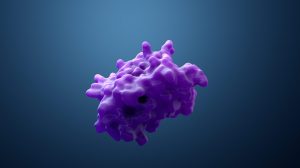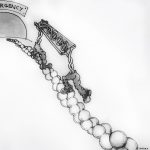Definition
noun, plural: myosins
A family of motor ATPases that interact with f actin filaments
Supplement
Myosins belong to a family of motor proteins in muscles to enable muscle contraction. They may also be present in other cells such as amoebae and macrophages as a motor protein involved in different motility processes. Their fundamental properties include capability to bind with actin and ATPase enzyme activity. Most of them are comprised of the head, the neck, and the tail domains. The head of the myosin is that part that binds with actin. The neck domain serves as a binding site for the light chains of myosin. The tail domain interacts with the other molecules and/or other myosin subunits.
An increasing number of different myosins are being described. Myosin I is an ubiquitous motor protein. It is a low molecular weight (111-128 kD) form found in protozoa acanthamoeba and dictyostelium that does not self-assemble and is found in the cytoplasm as a globular monomeric molecule that can associate with membranes and transport membrane vesicles along microfilaments. Brush border myosin I is a single-headed myosin found in the microvilli of vertebrate intestinal epithelial cells, linking the membrane to the microfilament core. There is a single heavy chain of 119kD and multiple (3 or 4) calmodulin light chains. The heavy chain has a C terminal domain that binds to acidic phospholipids.
Myosin II is the type of myosin found in muscle cells and is responsible for producing muscle contraction. It is the classical sarcomeric myosin that self assembles into bipolar thick filaments. Myosin II is a multimeric protein (440 kD) with two heavy chains (200 kD) and two pairs of light chains (17-22 kD) in each hexamer. Between species and tissues there are considerable variations in the properties of Myosin II. Cytoplasmic myosin II is a family of sarcomeric myosin like proteins, also hexameric, responsible for force generation by interaction with microfilaments. There are two heavy chains (up to 240 kD) and two pairs of light chains (15-20 kD), the self-assembled filaments are shorter than those of the sarcomere. The MYO2 gene product is an unconventional myosin from yeast involved in polarized secretion. MYO2 may be similar to dilute myosin from mouse and p190 protein from vertebrate brain. Scallop myosin is directly calcium regulated (through regulatory and essential light chains) and is more similar to sarcomeric myosin than to the nonsarcomeric myosins. Smooth muscle myosin has two 200 kD heavy chains, two regulatory 20 kD light chains that can be phosphorylated, altering its binding to the heavy chains which induces a conformational change that renders the myosin active and two 17 kD light chains.
Other myosins are Myosin III, Myosin III, Myosin IV, Myosin V, Myosin VI, Myosin VII, Myosin VIII, Myosin IX, Myosin X, etc..
Word origin: myo– (“relating to muscle”), Greek muós, mûs (“muscle”) + –in
See also:
- A bands
- Actin
- Actomyosin
- Arrowhead
- Edta light chain
- H disk
- Hinge region
- Myofilament
- Smooth muscle
- Striated muscle
- Thin filament
Related term(s):



